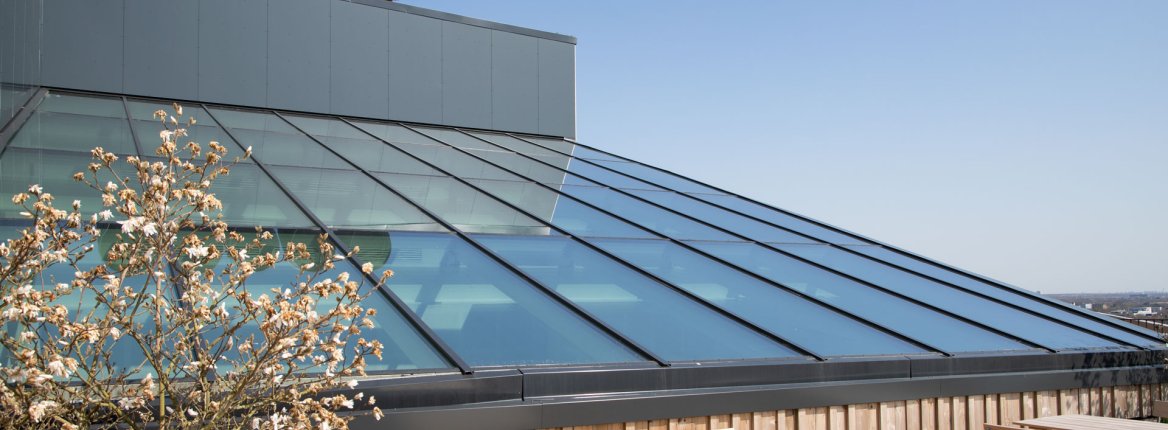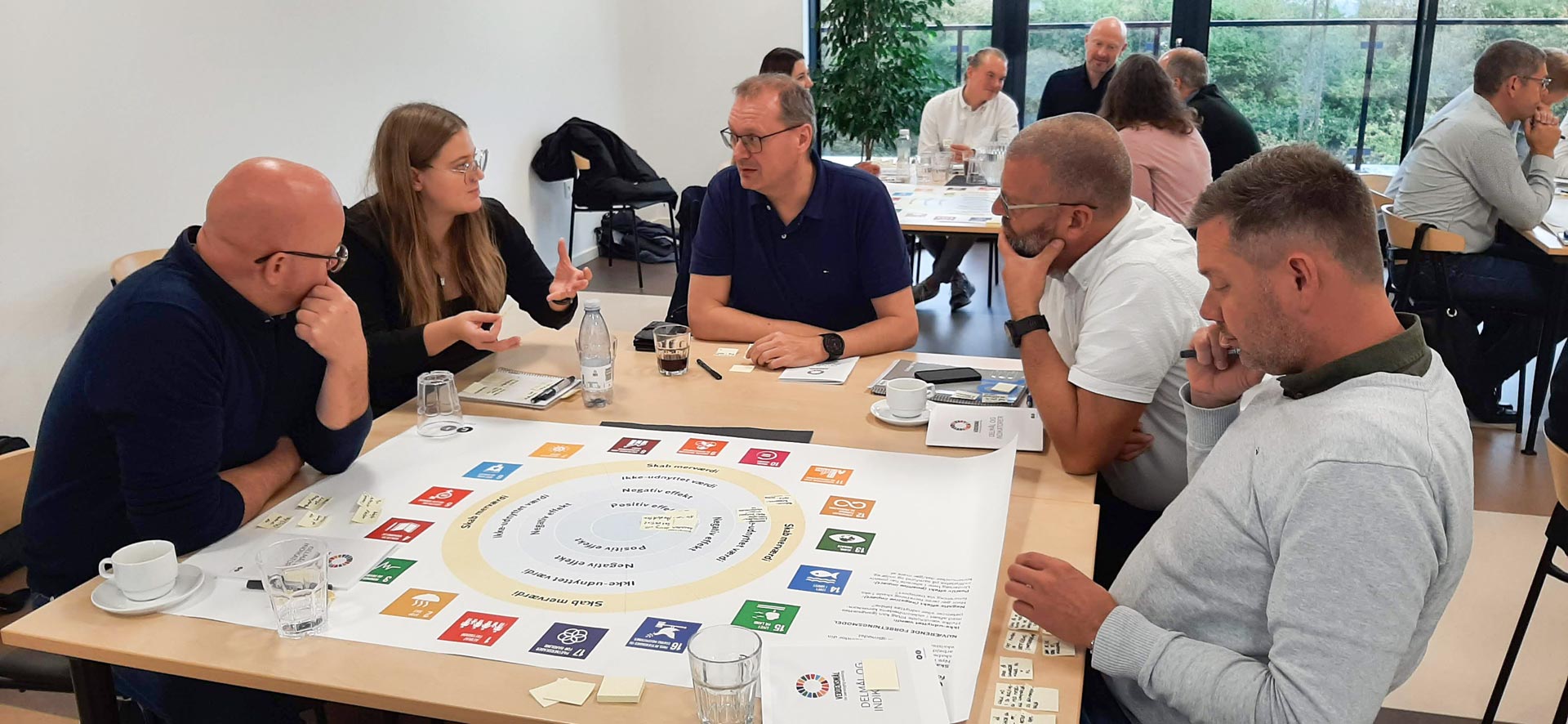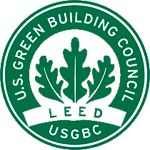Sustainability
Sustainability in Construction
With the increasing demand for documented sustainability in construction, we have made the decision to become the leading facade contractor in the industry for sustainable solutions.
With a continually growing portfolio of construction projects that implement sustainability certifications such as DGNB and BREEAM, it is natural for us to prioritize this. Our first steps involve a thorough understanding of our customers' wants and needs. The path to our goal is long, but the journey begins with the first steps. Together, we are building for a better future.

Sustainable Construction Goes Beyond the Environment
Sustainability extends beyond the environment and is rooted in three key areas: Environment, Economy, and Social Responsibility. These three pillars were first defined in the 1987 Brundtland Report and further elaborated in the 1992 Rio Declaration. When we talk about sustainable construction, it means striving to minimize the environmental impact in the most economical way while also creating a healthy and comfortable environment for people and preserving opportunities for future generations to meet their needs.
How We Work with Sustainability
Our overarching goal is to achieve a proper balance between meeting our customers' needs and our desire to run a sustainable business. With upcoming reporting on our local and global environmental impacts, we are better equipped to make the right decisions in this regard. Our first step on this path is to gain clarity about our own operations and value chain. We have dedicated resources responsible for this area to increase awareness of our resource consumption among our employees, customers, and other partners.
Our Focus Areas
- Knowledge Gathering
We actively participate in relevant standardization and networking groups to ensure that we have the right in-house knowledge to support our customers and meet upcoming reporting requirements.

Working with Sustainability and UN Sustainable Development Goals at HSHansen Our internal resources now include a certified DGNB consultant who is available internally to provide expertise and guidance on certified projects. This expertise enables us to have constructive dialogues with our subcontractors and ensures that they meet the requirements we face.
We also collaborate with Lead The Talent to develop a comprehensive documentation package specifically tailored to DGNB-certified projects. This initiative will enhance our ability to provide better and more targeted documentation for projects requiring certification.
- Implementing the UN Sustainable Development Goals
Our commitment to sustainability is also reflected in our internal workshops. These workshops have provided valuable insights and input on how we can best implement the UN Sustainable Development Goals in our daily practices.

Our Products and Material Choices
Our innovative systems are meticulously designed and built using aluminum as the primary material, both internally and externally, with thermal breaks to enhance energy performance. The choice of aluminum is based on several critical factors, including its long lifespan and minimal maintenance costs, as the material requires little to no maintenance.
Furthermore, aluminum has the significant property of being recyclable repeatedly without losing its material properties. It can be shaped in almost limitless ways. We have utilized this feature to develop and design our window systems with slim profiles, allowing ample natural light to promote comfort within the building.
We employ assembly solutions that are easy to disassemble at the end of their lifespan, enabling individual components to be separated and recycled in the appropriate fractions.
We have invested in Environmental Product Declarations (EPD) for our HansenMillennium window system and our prefabricated facade solution, HansenUnitAl. Our EPDs are prepared in accordance with the EN 15804+A2 standard and verified according to EN 14025.
You can also find our published EPDs on the ECO Platform.
Certified Construction
At HansenGroup, over the years, we have been involved in various projects under different sustainable construction certification schemes. These schemes all define a standardized approach to assessing activities, initiatives, and material choices regarding the three central aspects: environment, social responsibility, and economy. It's worth noting that the focus and weighting of these different aspects can vary significantly between different certification schemes. Therefore, we always have an internal sparring partner who supports our project managers when working on projects that need certification. This ensures that we meet the necessary requirements and achieve the desired sustainability goals in each project.
According to Rådet for Bæredygtigt Byggeri (Council for Sustainable Construction), which manages the certification scheme in Denmark, DGNB puts sustainability into a formula. DGNB is a certification scheme aimed at construction, buildings, and urban areas. The system is based on a holistic approach to sustainability (in accordance with the UN's definition) with the three main pillars: social, economic, and environmental sustainability. At Hansen, our primary experience with DGNB certification has been in connection with new buildings and extensive renovation projects.
# 1 Process Quality
# 2 Environmental Quality
# 3 Economy
# 4 Sociocultural / Functional Quality
# 5 Technical Quality
DGNB certified Hansen-projects:
- Nyt Høje-Taastrup Rådhus - Pre-certified DGNB-Gold
- AC Bangs Hus - DGNB-Silver + DGNB Diamond
- NH Collection Copenhagen - DGNB-Gold
- August Schade Kvarteret (ASK04): DGNB-Gold
- Lidl HQ - Goal: DGNB-Platin
- Musikkens Hus - DGNB-Gold
BREEAM, developed by the English organization BRE, was first launched in 1990 and has since continuously adapted to changes in the regulatory environment. Similar to DGNB, BREEAM is based on a comprehensive set of criteria that encompass environmental, social, and economic aspects.
Just like DGNB, BREEAM also exists in nationally adapted versions, such as BREEAM-NOR (Norway) and BREEAM-SE (Sweden).
At HSHansen, our primary focus has been on the Norwegian adapted version, BREEAM-NOR. We have actively worked with BREEAM certification within this scheme.
If you would like more information about BREEAM and specifically about BREEAM-NOR and its significance for sustainable construction, you can find additional details by following the links below:
Projects that must be BREEAM certified always receive special treatment in HSHansen's sales and project department, so that it is ensured that the requirements set in relation to BREEAM can be documented.
BREEAM certified Hansen-projects:
- Fylkeshuset Bergen - Goal: BREEAM - Excellent
- KB32 - BREEAM - Very good
- Sommerokvartalet i Oslo, Norge - BREEAM - Very good

LEED (Leadership in Energy and Environmental Design) is the American standard for building certification and has gained significant international recognition. Similar to BREEAM and DGNB, LEED is also based on the three central aspects of sustainability, but it has its own weighting and criteria.
At HSHansen, we have experience with LEED certification in several projects where the broader international recognition of the certification has been crucial to the client's goals.
If you would like more information about LEED and its significance for sustainable construction, you can find additional details by clicking here >>>
LEED-certified Hansen projects:
- Ferring: Mål: LEED-Gold

HSHansen has chosen to have Environmental Product Declarations (EPDs) prepared for our main systems, HansenUnitAl, and HansenMillennium.
These EPDs have been issued by the Building Research Institute (ITB) and have been prepared in accordance with EN standards, making them applicable for use in all EU markets.
The EPDs can serve as documentation for construction projects that require certification according to standards such as Dk-DGNB, LEED, or BREEAM.
You can find the EPDs here: